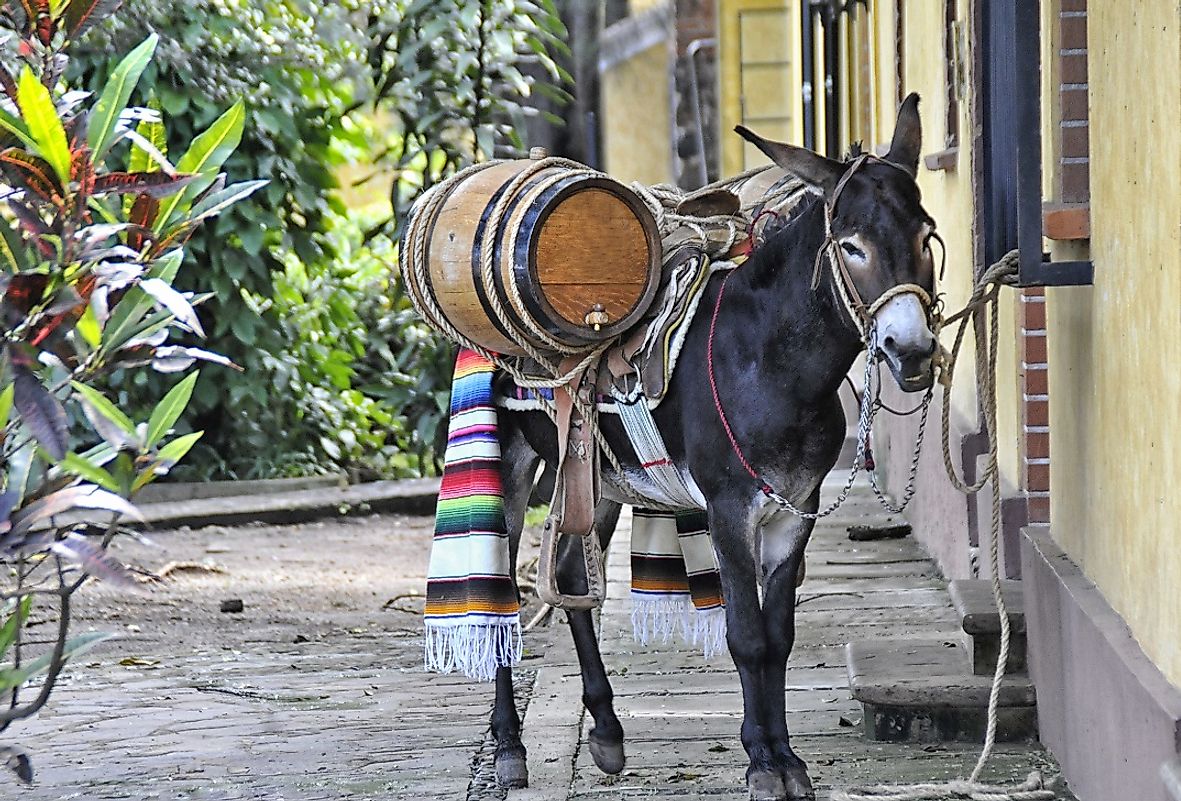Burro Facts: Animals of North America

5. Physical Description
The wild burro is a class of small donkeys with an adult weight ranging between 50 and 186 kilograms (110 and 410 pounds), with a height at the shoulders of around 3 to 4 feet. These animals possess long ears and have a short mane, and their coat colors range from black to brown to grey. The average weight of male burros is 122 kilograms (269 pounds), with that of females being 112 kilograms (247 pounds). Burros in the U.S.A. tend to be taller and stockier than their counterparts found in Mexico and Central America. Burros are extremely sure-footed, and are able to carry heavy burdens for days on end amidst harsh, arid environments.
4. Diet
Throughout most of the year, wild burros forage throughout the day. During the heat of summer, however, they will usually forage at late evening and early in the morning. These animals are able to survive by feeding on native grasses and forbs, and by browsing on woody plants. They will feed on a wide variety of plant species, including Plantain, Mormon Tea, and Palo Verde. Even though their plant diet supplies a certain amount of water, they also need supplemental water supplies to stay adequately hydrated. They usually select habitats with water bodies within 10 miles of their territories. These hardy animals can survive water losses of as much as 30% of their body weight, and are able to replenish such major losses by way of frenetic drinking episodes in as little as 5 minutes.
3. Habitat and Range
Burros originated in North Africa, and were introduced into the New World by the newly arrived Spaniards in the 1500s. These animals are often sighted in the deserts of North America today, such as those in the U.S. state of California, where their habitat extends as far east as Lassen County and as far south as Mono County, and stretches further down into and across the border with Mexico. Populations of burros have been also observed in other arid areas of the U.S.A, Mexico, and some central American countries. Burros thrive in habitats with vegetation like alkali desert scrubs, sagebrush, Joshua trees, montane chaparrals, and semi-arid pasturelands. Wildlife biologists believe that the rapid proliferation of the wild burro population poses a potential threat for such native animals as the Bighorn Sheep, who share their habitats and native plants for browsing and grazing with wild burros.
2. Behavior
Wild burros are active throughout the year, and are primarily diurnal in nature throughout much of it. In summer, they migrate to riparian areas with smaller home ranges than during other seasons. Their home ranges usually vary between 5 and 70 square kilometers. Males and females have overlapping territories, and males may exhibit territoriality during mating periods in order to access and claim female partners. Unlike wild horses, wild burros do not form family groups, though they may form loosely knit groups whose members temporarily interact to some degree socially. Members of such groups might graze together for a single afternoon, or even for several days, but will finally separate and move on alone. A female and her young one form the strongest social bonds, which might last up to two years in some cases, until they are mature enough to head out on their own.
1. Reproduction
Wild burros mate all year long, but their peak mating season runs from May through July. The gestation period of these animals lasts roughly 12 months. Hence, a peak in birth rates occurs during the roughly the same period as peak breeding, between May and July as well. Females produce one colt each year, and usually reproduce in alternate years, since breeding and birthing typically occur around the same time. Since the wild burros lack natural predators or competitors within their harsh desert habitat ranges, they can usually survive to live relatively long lives for feral animals. Many colts live to attain sexual maturity, and have a good chance to live as long as their expected lifespans in the wild, which are around 25 years.







